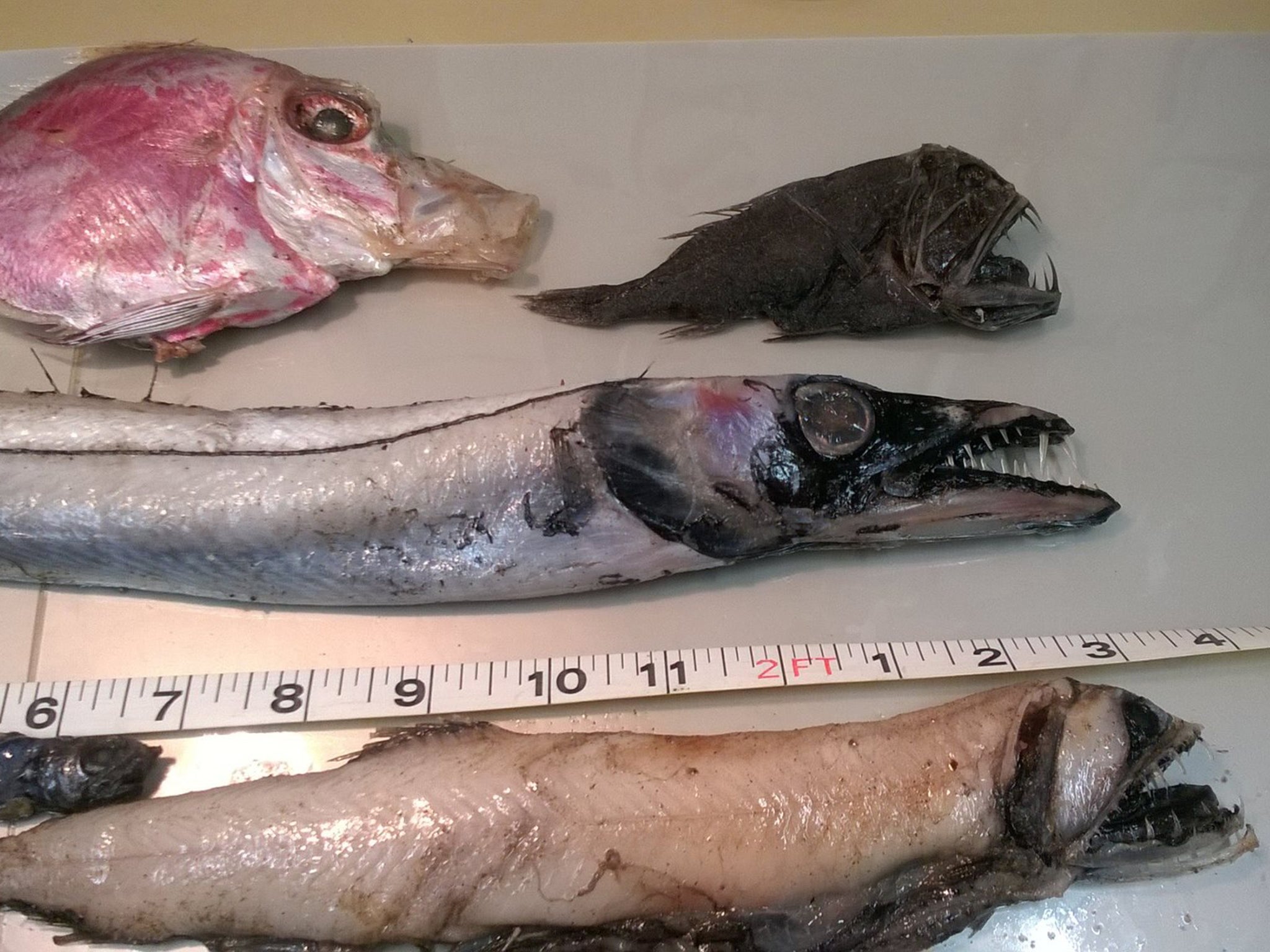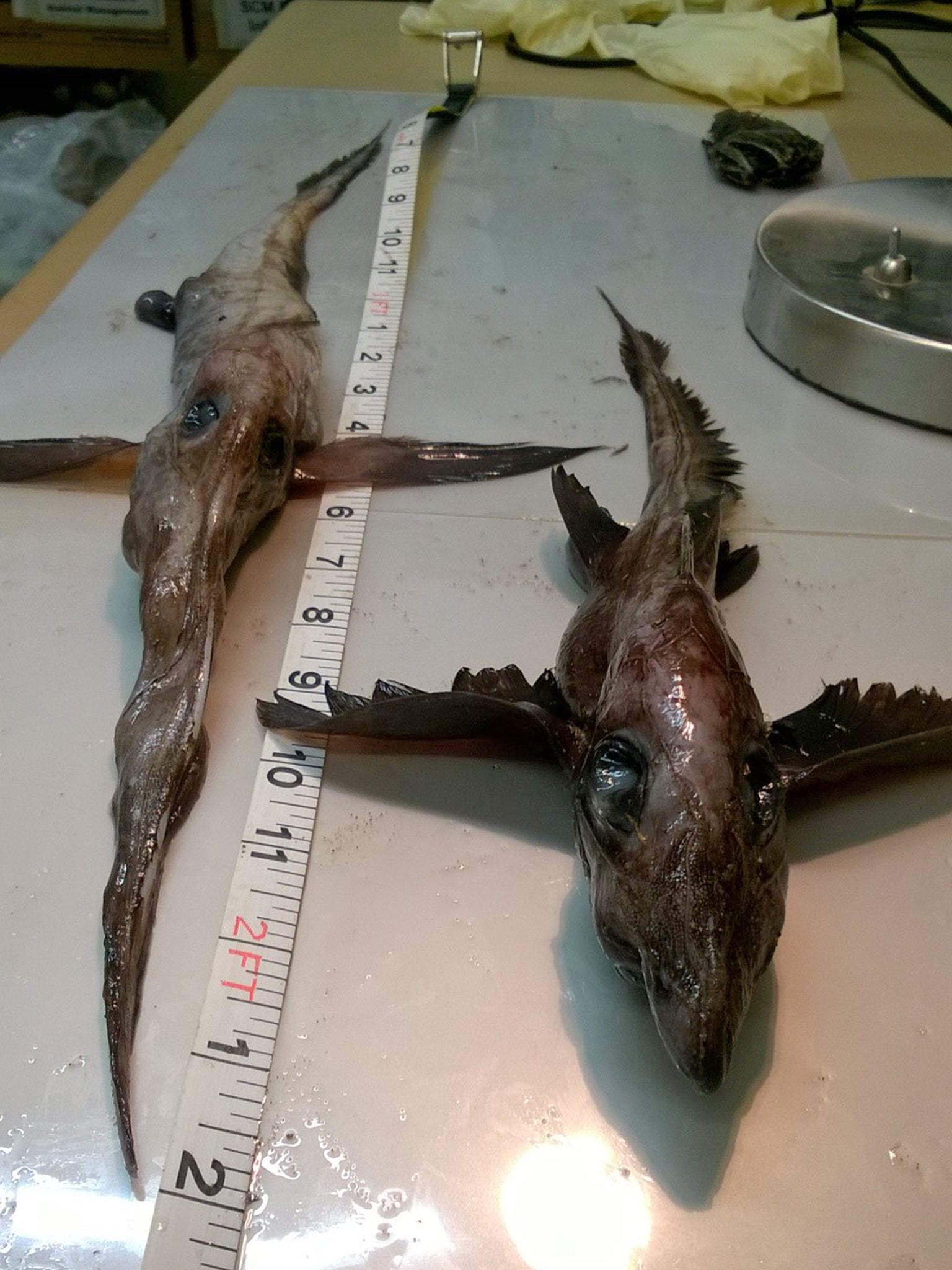Bizarre deep-sea creatures wash up on Scottish beach
Haul includes chimaera, fangtooth and viperfish

Your support helps us to tell the story
From reproductive rights to climate change to Big Tech, The Independent is on the ground when the story is developing. Whether it's investigating the financials of Elon Musk's pro-Trump PAC or producing our latest documentary, 'The A Word', which shines a light on the American women fighting for reproductive rights, we know how important it is to parse out the facts from the messaging.
At such a critical moment in US history, we need reporters on the ground. Your donation allows us to keep sending journalists to speak to both sides of the story.
The Independent is trusted by Americans across the entire political spectrum. And unlike many other quality news outlets, we choose not to lock Americans out of our reporting and analysis with paywalls. We believe quality journalism should be available to everyone, paid for by those who can afford it.
Your support makes all the difference.Several deep-sea fish have washed up on a beach in Scotland, sparking renewed interest in the bizarre-looking creatures.
Nearly 10 different species were found by two local conservation volunteers on St Cyrus beach in Aberdeenshire.
Jobrul Chamberlain, 15, and Bob Fitzpatrick took around 15 fish to the manager of the St Cyrus National Nature Reserve for identification.
Their haul included fangtooth, viperfish and deep-sea dragonfish, as well as chimaera or ghost sharks.
"It's a real privilege to see these fish close up," Therese Alampo, manager of St Cyrus National Nature Reserve, told The Independent.
"I think it is wonderful how so many people have shown an interest in these deep-sea creatures, and been inspired by how incredible they are."
The fish, which typically dwell in the darkness beneath the ocean's surface, had been caught by a marine scientist on a research expedition in deep water off the coast of the Shetland Islands, Ms Alampo said.

He then brought them to the beach, where they were washed out to sea by the tide before they reemerged.
Ms Alampo said pictures of the bizarre creatures posted on the reserve's Facebook page have been seen over 30,000 times.
She added: "The marine environment fascinates people.
"People see it as a mysterious world and connecting with it by seeing the creatures that live within it, usually hidden away, can be a magical and exciting experience."
Callum Roberts, professor of marine conservation at the University of York, told The Independent the fish would look even more spectacular if they had not been "trawl caught."
"Deep-sea fish tend to have very thin skins, given that they inhabit water where there is very little movement and tough skins are not necessary. So when they roll around in a trawl net, the skin is stripped off, which is why they look blotchy."
He said the different types of fish would rarely be seen by beachgoers, as they often inhabit deep-sea channels.
Join our commenting forum
Join thought-provoking conversations, follow other Independent readers and see their replies
Comments